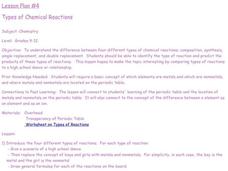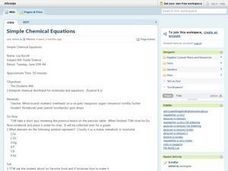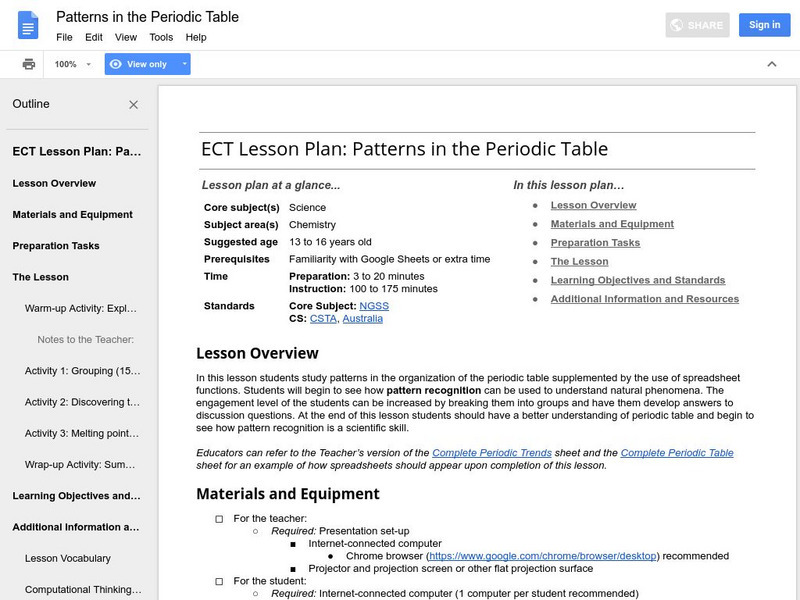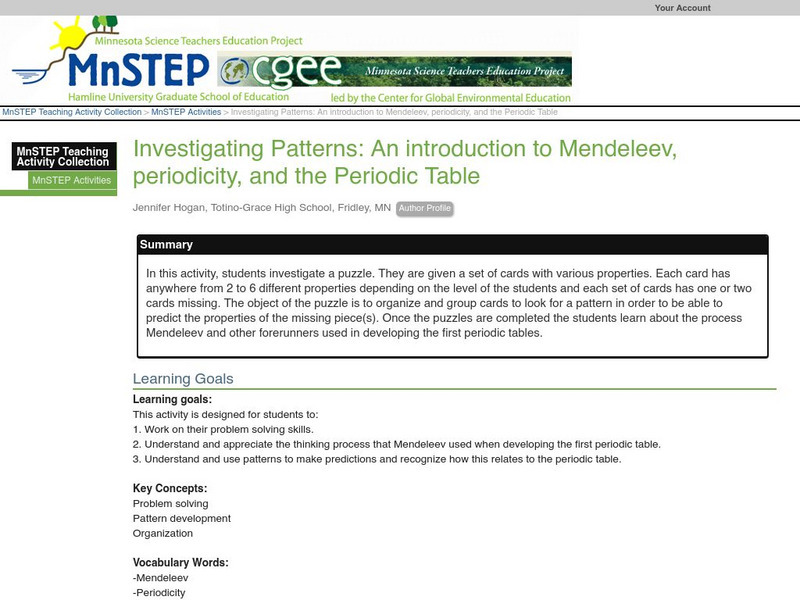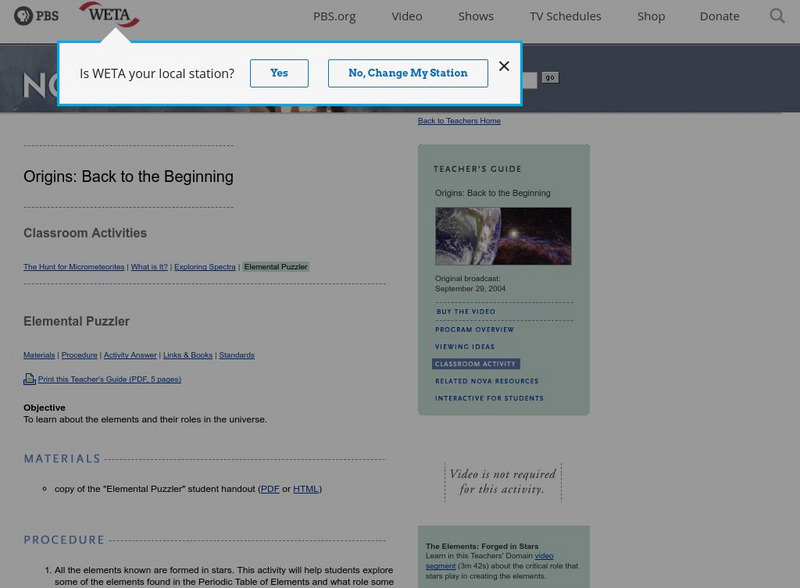Virginia Department of Education
Solution Concentrations
What happens when you combine 6.022 times 10 to the 23 piles of dirt into one? You make a mountain out of a mole hill. Scholars use dehydration to obtain percent composition and then calculate the molarity of the original...
Virginia Department of Education
Chemical Bonds
How are chemical bonds similar and how are they different? Provide your young chemists with the resources to more thoroughly understand the concepts of ionic and covalent bonds. Pupils research these topics, diagram examples of each...
Alabama Learning Exchange
Float or Sink?
Experiment with mass and density as scholars figure out what makes things float or sink. First, they watch a podcast introducing these concepts. Be sure to use the comprehension question to test their understanding. Young scientists...
Curated OER
Combating Corrosion
Students perform an experiment to show the chemical reactions that occur when metal corrodes. They apply the results of the experiment to the conservation efforts of art curators trying to restore an ancient Greek bronze. This lesson...
Curated OER
Edible Atom/Molecule
Upcoming chemists construct atom or molecule models out of candy. This is a classic idea that learners really enjoy; however, this lesson plan is vague. There is no instruction about the structure of atoms or molecules. Make sure you...
Curated OER
Types of Chemical Reactions
Students understand the difference between four different types of chemical reactions: composition, synthesis, single replacement, and double replacement and identify the type of reaction and predict the products of these types of...
Curated OER
CAN'T TOUCH THIS!
Young scholars discover the best practical shielding material when dealing with radioactive substances. They draw conclusions based on availability of materials, price, and best shielding properties.
Curated OER
The Connection Between Pigment and Light Colors
Students explain the mole concept and use this concept to prepare chemical solutions of particular molarities.
Curated OER
Metalloids
Students discuss metalloids, their use as semiconductors, and their impact on the computer industry. They work in groups to create a visual timeline showing the evolution of the computer.
Curated OER
Simple Chemical Equations
Eighth graders interpret the chemical symbols and shorthand used for molecules and equations. Through guided practice, 8th graders work to decipher and interpret the symbols for chemical equations. An opportunity for independent...
Curated OER
Forces And Energy
Students investigate the atom and how it is formed. They conduct research using a variety of resources and then construct a model of the atom. Then students have class discussion. The instructional activity includes background...
Curated OER
Bouncing Balls
Students create a polymer to demonstrate its properties and develop an awareness of the wide variety of uses for polymers.
Google
Google for Education: Patterns in the Periodic Table
Students study trends in the periodic table of elements, supplemented by the use of spreadsheet functions. The spreadsheet functions presented can be used on any data set.
Google
Google for Education: Example: Patterns in the Periodic Table
A lesson plan where students examine the trends in the periodic table.
American Chemical Society
Middle School Chemistry: Periodic Table and Energy Level Models
Learners interpret the information given in the periodic table to describe the arrangement of electrons on the energy levels around an atom.
Science Education Resource Center at Carleton College
Serc: Valence Electrons and Trends in the Periodic Table
This instructor led activity will produce a partially filled periodic table that contains electron-dot models for the first twenty elements in the appropriate boxes. It will be used as a visual tool for learners to connect concepts such...
Alabama Learning Exchange
Alex: Periodi Cally Used Elements
This activity explores the various uses of elements in the periodic table. Students will be assigned an element to research. They will then present its uses and atomic information to the class.
Alabama Learning Exchange
Alex: Periodic Table of Poetic Elements
Each student will create a poem about an element on the periodic table. The poems will be placed in the appropriate "square" to create a large periodic table wall hanging. This project will require the collaborative work of several...
Utah Education Network
Uen: The Periodic Table and the Universe
Students will apply the atomic number of elements on the periodic table to the origin of heavy elements in the star cycle.
Alabama Learning Exchange
Alex: Who Wants to Know the Periodic Table?
The purpose of the project is to help the students gain an in depth knowledge of the Periodic Table of Elements. The periodic table is the very backbone of chemistry. In order for the students to be successful in chemistry, they must be...
Science Education Resource Center at Carleton College
Serc: Trends on the Periodic Table: Metals, Non Metals, and Metalloids
In this lab activity, students will be asked to observe and then test the physical and chemical properties of several different elements.
TeachEngineering
Teach Engineering: Understanding Elements
This lesson plan examines the properties of elements and the periodic table. Learners learn the basic definition of an element and the 18 elements that build most of the matter in the universe. The periodic table is described as one...
Science Education Resource Center at Carleton College
Serc: Investigating Patterns: An Introduction to Mendeleev
In this activity, students investigate a puzzle. They are given a set of cards with various properties. Each card has anywhere from 2 to 6 different properties depending on the level of the students and each set of cards has one or two...
PBS
Pbs Teachers: Origins: Back to the Beginning
Explore the elements found in the Periodic Table of Elements and what role some of them play in the universe. Test your knowledge of the elements and the organization of the table by completing a puzzle.





